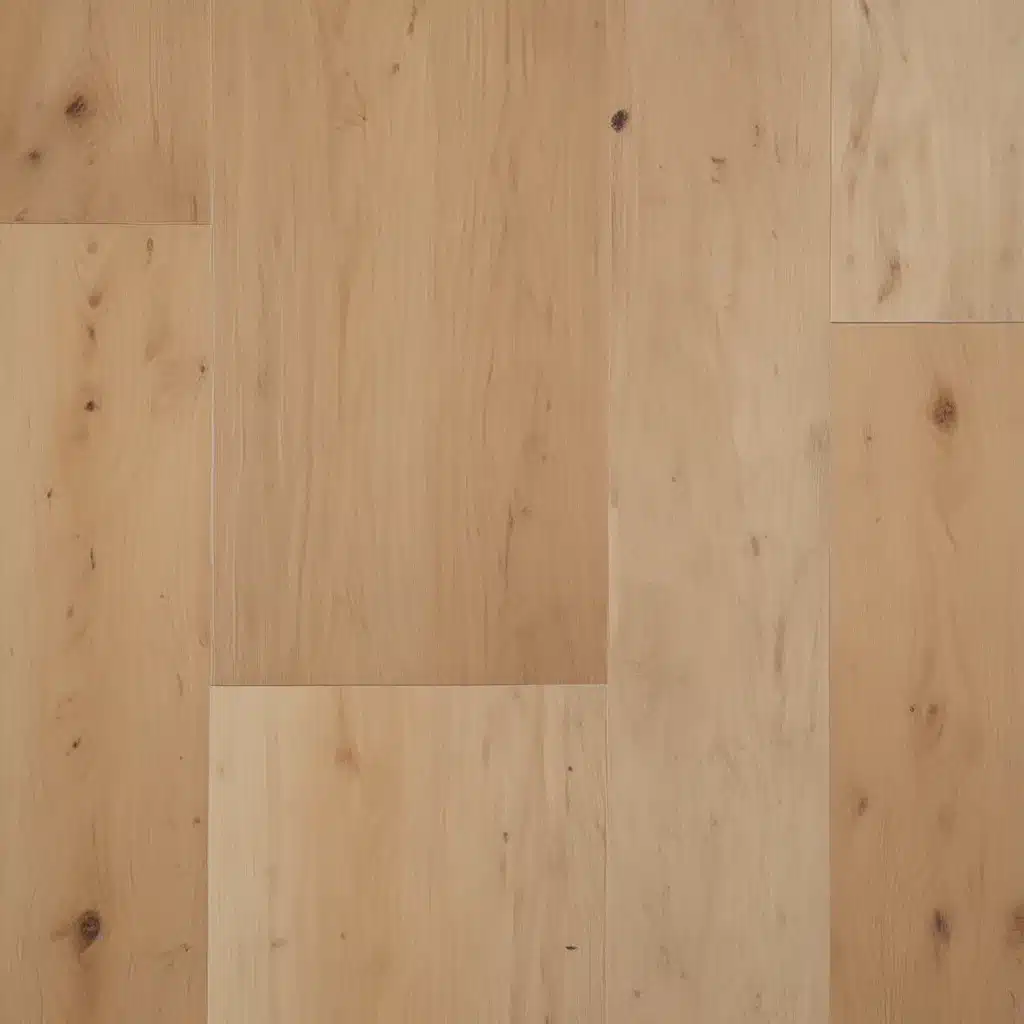
Laying the Foundation for a Greener Future
As a proud Aberdeen-based building and renovation company, we know that the choices we make today can have a lasting impact on the environment. That’s why, when it comes to selecting flooring materials, sustainability is a top priority. After all, the floor is the foundation upon which a space is built – quite literally!
So, let’s dive in and explore the world of eco-friendly flooring options. From the bamboo forests of Asia to the cork oak groves of the Mediterranean, Mother Nature has provided us with a veritable treasure trove of beautiful, durable, and sustainable materials. And trust me, the options go way beyond the traditional hardwood and tile suspects.
Bamboo: The Speedy Superstar
When it comes to sustainable flooring, bamboo is undoubtedly the rock star. This fast-growing grass reaches maturity in a mere 3-5 years, making it one of the most renewable resources on the planet. Compared to hardwood trees that can take decades to reach harvestable size, bamboo is like the Usain Bolt of the plant kingdom.
As the team at From the Forest explains, bamboo’s rapid growth rate means we can enjoy all the classic hardwood benefits – gorgeous aesthetics, impressive durability, and unparalleled versatility – without the guilt of clear-cutting ancient forests. Plus, many bamboo suppliers are committed to sustainable harvesting practices, ensuring the longevity of this remarkable resource.
Cork: The Renewable, Recyclable Wonder
If bamboo is the rock star, then cork is the unsung hero of sustainable flooring. This material, harvested from the bark of cork oak trees, is truly a gift that keeps on giving. As the team at Diverse Flooring explains, cork oak trees can be harvested every 9 years without causing any damage, making cork an endlessly renewable resource.
And the benefits don’t stop there. Cork is naturally resistant to mold, mildew, and allergens, making it a fantastic choice for healthy indoor environments. Oh, and did I mention it’s biodegradable? When the time comes to replace your cork floors, you can rest easy knowing they’ll decompose gracefully without leaving a trace.
Linoleum: The Comeback Kid
Remember linoleum? That old-fashioned flooring material that’s been relegated to school hallways and grandma’s kitchen? Well, hold onto your hats, because linoleum is making a major comeback in the world of sustainable design.
According to the experts at Green Building Supply, modern linoleum is a far cry from its outdated reputation. Made from a blend of natural materials like linseed oil, cork, and wood flour, linoleum is 100% biodegradable and free of harmful VOCs. Plus, its impressive durability and moisture-resistance make it a practical choice for high-traffic areas.
So, if you’re looking to add a touch of retro-chic to your home or business, while also doing your part for the planet, linoleum might just be the sustainable flooring solution you’ve been searching for.
Engineered Hardwood: The Best of Both Worlds
Of course, we can’t discuss sustainable flooring without touching on the classic – hardwood. But as you might have guessed, the traditional solid hardwood floors of yesteryear aren’t exactly the greenest option.
Enter engineered hardwood – the sustainable sibling of its solid counterpart. As the team at From the Forest explains, engineered hardwood combines a thin veneer of real wood with a core made of plywood or other recycled materials. This clever construction means fewer slow-growing hardwood trees are sacrificed, while still delivering the beautiful, timeless look we love.
And the sustainability benefits don’t stop there. Engineered hardwood also boasts low VOC levels, ensuring your indoor air quality stays fresh and healthy. Plus, many manufacturers use eco-friendly finishes and stains to further reduce the product’s environmental impact.
Recycled and Reclaimed: Giving New Life to Old Materials
Sometimes, the greenest option is to give new life to materials that would otherwise end up in a landfill. That’s where recycled and reclaimed flooring options come into play.
As The Spruce explains, flooring made from recycled glass, polyethylene terephthalate (PET) carpets, or reclaimed hardwood not only keeps waste out of our overflowing landfills, but also provides a unique and visually striking aesthetic. Imagine the character and charm of an antique wood floor, or the vibrant pop of color from recycled glass tiles – the design possibilities are endless!
And let’s not forget about the environmental benefits. By repurposing existing materials, these flooring options significantly reduce the demand for new resource extraction and processing, ultimately lowering the carbon footprint of your project.
A Flooring Future Worth Celebrating
As I reflect on all the incredible sustainable flooring options available, I can’t help but feel optimistic about the future. It’s clear that the building and renovation industry is embracing the call for greener, more eco-friendly solutions. And with innovative materials like bamboo, cork, and reclaimed wood at our fingertips, there’s no reason we can’t create spaces that are not only beautiful, but also kind to our beloved planet.
So, the next time you’re planning a project, whether it’s a cozy home renovation or a cutting-edge commercial space, I encourage you to explore the vast world of sustainable flooring. Who knows, you might just discover the perfect foundation for a greener, more sustainable future. And if you need any guidance along the way, the team here at ABC Home is always happy to lend a hand.
















